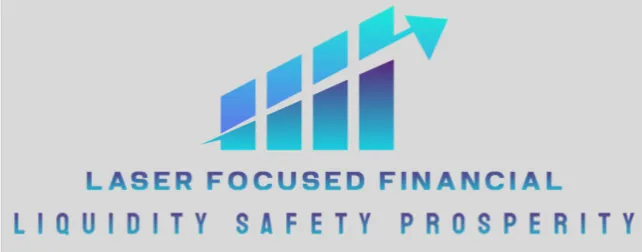
Anthony Gambale
631-343-3190
Financial Strategist Retirement Specialist
Achieve and Exceed Your Goals
There are just a handful of financial professionals that understand the power and the concepts that we teach to the public. Are you ready to learn more then 90% of licensed to professionals?
Crafting Tax-Free Retirement Income
We're going to explore the fascinating world of creating tax-free retirement income using a financial strategy likened to a five-story apartment building. I've spent over three decades as a financial strategist and retirement planning specialist, assisting thousands in optimizing assets, minimizing taxes, and ensuring a comfortable retirement.
Picture your retirement strategy as a five-story apartment building, and the key to funding this structure for generating tax-free income lies in the concept of max-funded index universal life insurance policies (IUL). These policies have been my favorite since 1997 when indexing first emerged.
The roots of this strategy trace back to 1980 when EF Hutton, a brokerage firm, tapped into the multi-trillion-dollar insurance industry's potential. The idea was revolutionary—instead of seeking the maximum death benefit for the least premium, flip the script. Acquire the minimum insurance the IRS allows and infuse it with the maximum premium, adhering to tax citations like TEFRA, DEFRA, and TAMRA.
TEFRA (Tax Equity Fiscal Responsibility Act of 1982) and DEFRA (Deficit Reduction Act of 1984) dictate the minimum insurance required based on age, gender, and health. This minimum allows for tax-free accumulation under section 72E and tax-free income under section 7702, even before the age of 591/2. Upon passing away, the remaining funds transfer income tax-free under section 101A as a death benefit.
This strategy provides unparalleled advantages. No other vehicle in the Internal Revenue Code offers tax-free accumulation, growth, and income, coupled with a tax-free transfer at death.
The process involves a meticulous balance, considering the minimum insurance required for your age and health. Even if you're uninsurable, a surrogate can hold the insurance, ensuring the owner reaps the tax-free benefits. This led to a massive shift of funds from traditional institutions to max-funded insurance policies in the 1980s due to their safety, higher interest rates, and tax advantages.
In response to this shift, Congress implemented TAMRA (Technical and Miscellaneous Revenue Act) in 1988. TAMRA slowed the flow of funds into these policies, limiting the amount you could contribute annually. This annual cap ensures compliance with tax regulations, allowing for tax-free income in retirement.
Imagine this strategy as constructing an apartment building. You can only rent out one floor per year, gradually filling it over four years. Similarly, with an IUL policy, you adhere to TAMRA by slowly filling up the "bucket" with premium payments, ensuring compliance with TEFRA and DEFRA guidelines.
The result? A tax-free cash cow. Accumulate, access, and transfer your money tax-free, generating income without depleting the principal. This channel aims to guide you in designing an IUL policy that aligns with TEFRA, DEFRA, and TAMRA, maximizing your tax-free income potential in retirement.
Guardians of Prosperity: A Tale of Safety and Growth
In the ever-shifting landscape of financial markets, where fortunes can rise and fall with the capricious winds of economic change, the story of Index Universal Life (IUL) insurance emerges as a testament to the delicate dance between safety and growth.
Our journey begins in the early 2000s, a time when many entrusted their financial destinies to the unpredictable embrace of traditional IRAs and 401Ks. The market, akin to a tempestuous sea, sailed smoothly for four years, carrying the hopes and investments of countless individuals to new heights. Yet, as history recalls, the storm of 2008 struck with a vengeance, causing a 40% plunge that left portfolios battered and dreams deferred.
Enter the protagonist of our narrative: the Index Universal Life insurance policy. In Series 2, this financial guardian introduces the concept of indexing, a mechanism that allows investors to navigate the market's tumultuous waves without succumbing to the depths of losses. As the storyteller, we follow the tale of a $100,000 investment, which, if subjected to the market's caprices, could climb to $238,000 only to descend to a mere $150,000 in the wake of a market correction.
In contrast, the hero of our story, the indexed universal life policy, stands resilient. It provides a haven during market downturns, allowing investors to lock in gains and shield their principle from the ravages of economic storms. This approach aligns with the wisdom of financial titans like Warren Buffett, who reminds us that preserving capital is paramount.
Our narrative takes a turn toward the essence of safety in principle. In the world of indexed universal life, the investor's money finds refuge in the protective arms of an insurance company, earning a stable general account portfolio rate, typically around 5%. When linked to an index, the investor relinquishes the interest earned, ensuring that the principle remains secure even in the face of market volatility.
The tale unfolds further, revealing a strategic approach akin to a ratchet wrench. In this financial adventure, gains are locked in, akin to tightening the wrench, ensuring that progress is never lost, even in the face of market downturns. The protagonist, the indexed universal life policy, enables the investor to reset and participate anew in market upswings without the lingering scars of previous losses.
As the narrative unfolds over a 10-year period, it becomes clear that this financial journey is more than a tale—it's a blueprint for prosperity. The worst decade since the Great Depression, from 1999 to 2009, serves as the backdrop, showcasing the resilience of the indexed universal life policy. While the market struggles to recover, our hero thrives, providing a tax-free haven that not only preserves but multiplies the initial investment.
In the closing scenes of our narrative, we witness the triumph of wisdom over uncertainty. The strategy of locking in gains and resetting becomes a beacon of hope in the face of market volatility. In 2017, when many faced a flat market, those with an indexed universal life policy reveled in gains of 16% or even 25%, showcasing the enduring power of a strategy focused on safety of principle. And so, our tale concludes, not with a fable but a testament to the guardians of prosperity—the Index Universal Life insurance policy—a narrative of safety and growth in the ever-evolving saga of personal finance.
Maximizing Retirement Income: Unleashing the Potential of Max Funded Insurance
In the intricate landscape of retirement planning, the choice between annuities and max-funded insurance looms large. Both instruments promise a secure income stream during the golden years, yet the narrative unfolds with a distinct emphasis on the formidable advantages of max-funded insurance.
An annuity, in its essence, mirrors a savings account housed within the fortress of an insurance company—the stalwart backbone of America and indeed the world. Boasting a colossal multi-trillion-dollar industry, insurance companies become the go-to lifeline for governments seeking financial support in times of need. From weathering the tempest of the Great Depression to emerging unscathed from the tumult of the 2008 financial crisis, the insurance industry stands as a testament to resilience.
Annuities parade in two distinct processions: the qualified and the non-qualified. The former, snugly nestled within IRAs or 401(k)s, dances with pre-tax dollars. On the other hand, the latter, funded with after-tax dollars, emerges as a beacon for those seeking a reliable income stream in retirement.
However, the narrative, with a critical lens, spotlights a fundamental flaw in annuities—taxation. The income derived from annuities faces the taxing guillotine, adhering to the last in, first out (LIFO) principle. This means that when the time comes to retrieve funds, the last-earned interest is the first to be subjected to taxation, standing in stark contrast to the favored first in, first out (FIFO) method.
In strides the hero of our financial tale—max-funded indexed universal life insurance. This alternative luminary in the retirement galaxy illuminates the path with the promise of tax-free income during the twilight years. The narrative boldly challenges the conventional wisdom that life insurance inherently carries a burden of additional costs compared to its annuity counterpart.
The crux lies in structuring—the strategic act of consistently funding the policy to cover the death benefit. Contrary to the prevailing belief, this approach allows max-funded insurance to outshine annuities, often boasting higher caps on returns. The narrative unravels the mystery of these higher caps, revealing them as a hidden gem in the landscape of annuities.
The narrative dismantles the widely held notion that insurance costs hinder the prowess of max-funded policies. Through meticulous funding, the policy mitigates risks, causing the amount of insurance at stake to dwindle over time. This unique structural evolution renders the insurance policy more affordable as the policyholder ages—a stark departure from the traditional trajectory of life insurance.
In the crescendo of our narrative, the spotlight accentuates the undeniable merits of max-funded insurance over annuities. Not merely content with offering a potentially higher tax-free income during retirement, this financial luminary extends a substantial death benefit that eclipses the customary offerings of annuities. The crescendo is a symphony of triumph, as the insurance policy not only augments in value but also gracefully transfers income tax-free upon the curtain call of life.
In the pursuit of unparalleled retirement income, the narrative beckons a paradigm shift, inviting individuals to explore the uncharted potential of max-funded insurance—a formidable contender in the arena, challenging the supremacy of traditional annuities.
Anthony Gambale
(631) 343-3190
anthony@laserfocusedfinancial.com
©Copyright Laser Focused Financial All Rights Reserved
